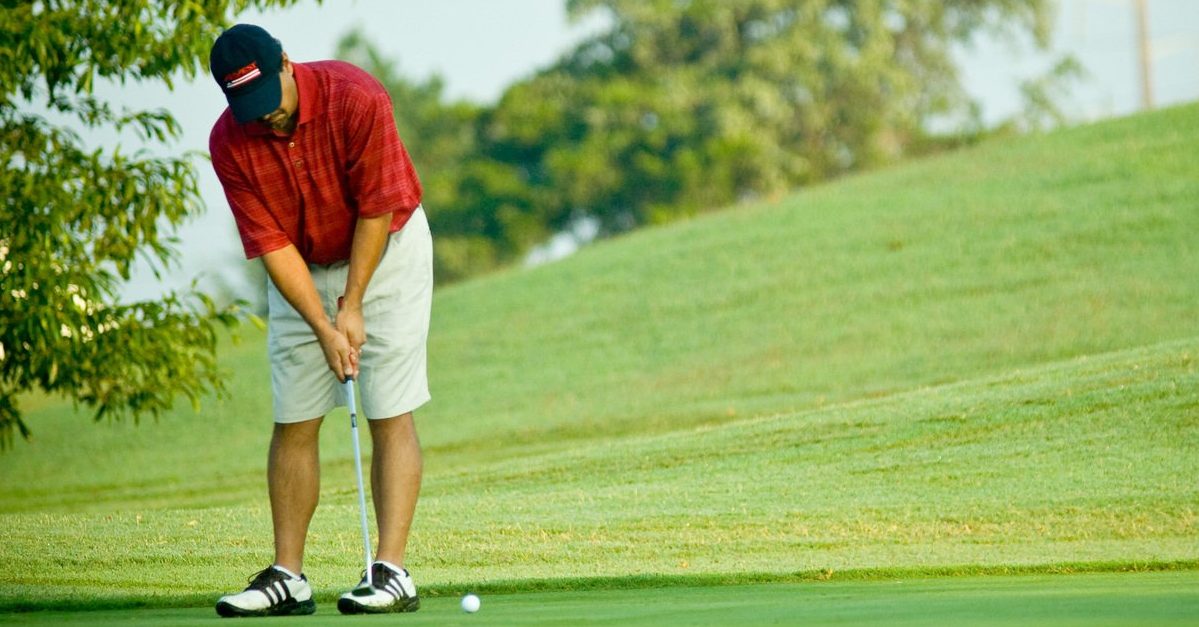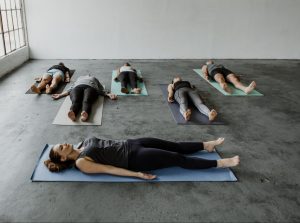
Health Benefits of Golf
William L. Healy, MD
Lahey Health
Professor of Orthopaedic Surgery, Boston University School of Medicine
Senior Lecturer, Faculty of Medicine, Harvard University
Introduction
The health benefits of golf were first mentioned in a print publication by William Ramesey in 1672 in London, England, and in 1904, John Ward wrote an essay titled “The Benefits and Charms of Golf as an Outdoor Exercise”. For more than a century, in medical and non-medical publications, doctors, scientists, exercise physiologists, physical therapists, psychologists, and the golf industry have extolled the virtues of golf as contributing to individual and public health.
In 2018, the British Journal of Sports Medicine summarized knowledge regarding the health benefits of golf when they published a systematic literature review, “International Consensus Statement on Golf and Health.”
This white paper was developed during the Covid-19 pandemic to educate and inform allied golf associations and government officials regarding the physical, mental, and public health benefits of golf.
Physical Health Benefits of Golf
Increased Life Expectancy
- Playing golf regularly is associated with increased longevity.
- A study of 300,000 male and female golfers in Sweden documented life expectancy for golfers was five years longer than for non-golfers.
Improved Cardiac Health and Aerobic Performance
- Golf provides moderate intensity aerobic physical activity.
- Golf is a high intensity interval activity for elderly men.
- An eighteen hole round of golf is associated with 10,000-12,000 steps, walking 7000-8000 yards, burning 1500-2500 calories, and maintaining a heart rate of 100 beats per minute for two to five hours.
- Golf provides physical activity for persons of all ages.
- Physical health benefits are greater for golfers who walk the golf course compared to golfers who ride in motorized carts.
Improved Cardiac Risk Factors
- Walking the golf course is associated with decreased Total Cholesterol, increased High Density Lipoprotein (HDL), and an increased ratio of HDL to Total Cholesterol
- The favorable impact of golf on these cardiac risk factors is a health benefit.
Blood Glucose Control
- During an eighteen hole round of golf, Blood Glucose decreased 20% for young golfers, 10% for middle aged golfers, and 30% for elderly golfers.
Weight Control
- Walking the golf course is associated with decreased Weight and Body Mass Index for golfers as compared to non-golfers.
- Walking the golf course is associated with weight reduction, decreased waist circumference, and reduced abdominal skin fold thickness.
Golfers Who Ride Golf Carts Realize Health Benefits
- Motorized golf carts allow senior and disabled persons to play golf.
- Golfers who ride golf carts appreciate physical health benefits from physical activity and outdoor exercise.
- Golfers who ride golf carts experience mental health benefits from social interaction and competition.
Improved Strength, Balance, and Fall Prevention
- Playing golf provides strength and balance for older adults.
- Senior male golfers have better balance, increased balance confidence, and less fear of falling than age matched non-golfers.
Reduced Risk of Chronic Health Conditions
- The physical activity associated with golf reduces the risk of cardiovascular disease, Type 2 Diabetes, Colon Cancer, Breast Cancer, Depression, and Dementia
Sleep Enhancement
- Golf exercise is associated with ease of falling asleep and deeper, more profound sleep.
Reduced Mortality
- Mortality for golfers was 40% less than mortality for non-golfers in a cohort of 300,000 Swedish golfers, and this benefit applied to men and women of all ages. Interestingly, low handicap golfers had the lowest mortality rate.
- Risk of mortality for men, who participated in moderately vigorous physical activity, such as golf, was 23% lower than for men who did not exercise. The study population included 10,000 men 45-84 years old.
Mental Health Benefits of Golf
Improved Self Esteem and Self Worth
- Playing golf is associated with improved self-worth and self-esteem.
Reduced Anxiety and Stress
- Golf provides exercise and social interaction in a pleasant environment, which can reduce anxiety and lower stress.
Reduced Impact of Depression
- Exercise, including golf, decreases the impact of depression for women golfers, who have a depression condition.
- The impact of golf on depression in men has not been reported.
Inter-Generational Connection
- Golf offers opportunities for inter-generational connection.
- Family relationships can be strengthened by golf experiences.
Post-Traumatic Stress Disorder
- Golf is used as a treatment for military veterans suffering from PTSD.
Treatment for Degenerative Brain Condition
- Golf training for adults older than 65 years improves immediate logical memory, delayed logical memory, and composite logical memory compared to senior adults who do not play golf.
- Golf is used for patients with moderate to severe Alzheimer’s disease to reduce the isolation of the disease with time spent in the peaceful environment of the golf course.
Treatment for Substance Abuse
- Golf has been used successfully for therapy for persons battling substance abuse.
Public Health Benefits of Golf
Recreation
- 70% of golf facilities in Massachusetts are open to the public
- Golf allows men and women of all ages to exercise and enjoy the outdoors.
- Junior Golf programs foster positive development on and off the golf course
- Recreational and competitive golf provides an outlet for personal and professional stress.
Preservation of Open Space & Protection for the Environment
- Playing golf provides golfers a connection to nature and the environment.
- 91% of golf course acreage is green space, which provides habitat, migration corridors, and food for wildlife in the surrounding environment.
- Trees on golf courses provide shade, protect land from erosion, remove carbon dioxide from the atmosphere, and add oxygen to the air.
- Sustainable agronomic practices at golf courses protect water resources.
Golf “Gives Back to the Commonwealth”
- Golf in Massachusetts “gives back” more than $75 million annually with charitable activities, scholarships, and philanthropic donations
Golf Can Be Played Safely in 2020
- The Golf Alliance of Washington summarized sixteen steps for creating a safe golfing environment during and after the Covid-19 pandemic.
- The incidence of injury from playing golf is lower than most other athletic activities.
- Golf injuries are generally associated with overuse, trauma, and poor mechanics during the golf swing.
- The most severe golf injuries are associated with motorized golf carts.
- Skin cancer can be a risk for golfers if appropriate precautions regarding sun exposure are not followed.
Conclusion
Medical and non-medical publications demonstrate that golf offers physical, mental, and public health benefits to golfers and to the Commonwealth.
I will conclude this white paper on the Health Benefits of Golf, with a 1935 letter by the poet, Robert Frost, in which he expounded on his theory of mental health for humanity. Frost believed that “form” was a necessary and “vital need for humanity” to survive and prosper against a background of “black and utter chaos” full of “large excruciations”. Frost’s suggestion for “form” can take any shape — a book, a letter, a garden, a ring of smoke — but it is really everybody’s “sanity to feel and exert a measure of form in this world.” What better way to exert form and concentration but in an ordered round of golf in the pleasant environment of a golf course?
Acknowledgement: Several family and friends assisted with the development of this white paper. Thank you Tom Bagley, Mike Considine, Angela Healy, Rich Iorio, Scott Seymour.
WLH
Concord, MA
May 1, 2020
whealy@lahey.org
References for Health Benefits of Golf
William L. Healy, MD
Ainsworth BE, Haskell WL, Hermann SD, et. al. 2011 Compendium of Physical Activities: A Second Update of Codes and MET Values. Medicine and Science in Sports and Exercise 2011; 43:1575-81.
Berlin KL, Klenosky DB. Let Me Play, not Exercise. A laddering study of Older Women’s Motivations for Continued Engagement in Sports-based versus Exercise-based Leisure Time Physical Activities. Journal of Leisure Research2014; 46:127-152.
Broman G, Johnson L, Kaijser L. Golf: A High Intensity Interval Activity for Elderly Men. Aging Clinical and Experimental Research. 16: 5: 375-381. 2004.
Cabri J, Sousa JP, Kots M, Barreiros J. Golf Related Injuries: A Systematic review. European Journal of Sport Science, 9:6:353-366, November 2009.
CannAP, Vandevoort AA, Lindsay DM. Optimizing the Benefits versus Risks of Golf Participation by Older People. J. Geriatric Physical Therapy, 2005; 28:85-92.
Coate D, Schwenkenberg J. Survival Function Estimates for Champion Tour Golfers. Journal of Sports Economics, 2013; 14:656-663.
Del Bos J, Fernandez-Morono T, Padilla-Espana L, Aguilar-Bernier M, Rivas-Ruiz F, de Troya-Martin M. Skin Cancer Prevention and Detection Campaign at Golf Courses on Spain’s Costa del Sol. Actas Dermo-Sifiliograficas. 106:1:51-60. 2015.
Farahmand B, Broman G, de Faire U, Vagero D, Ahlbom A. Golf: A Game of Life and Death—Reduced Mortality in Swedish Golf Players. Scandinavian Journal of Medicine and Science in Sports 2009: 19: 419-424.
Frost, Robert. Letter to the Amherst Student, Amherst, MA. March 25, 1935
Gao KL, Hui-Chan CWY, Tsang WWN. Golfers Have Better Balance Control and Confidence Than Healthy Controls. European Journal of Applied Physiology. 2011: 111: 2805-2812.
Golf Alliance of Washington. Letter to Governor Inslee. April 10, 2020.
Health Fitness Revolution. Top 10 Health Benefits of Golf. February 8, 2020.
Levins K. 5 Mental Health Benefits You Get From Golf. GolfDigest.com. April 8, 2020.
Massgolfeconomy.com/resources.
McCarthy S, Paul L, O’Connell M. Skin Cancer Awareness Among Irish Golfers. South Infirmary Victoria University Hospital, Cork, Ireland.
McGwin G, Zoghby JT, Griffin R, Rue LW. Incidence of Golf Cart Related Injury in the United States. Journal of Trauma, Injury, Infection, and Critical Care. 64:6:1562-1566. June 2008.
Murray AD, Archibald D, Murray IR, Hawkes RA, Foster C, Barker K, Kelly P, Grant L, Mutrie N. 2018 International Consensus Statement on Golf and Health to guide action by people, policymakers, and the golf industry. British Journal of Sports Medicine. 52:1426-1436. November 2018.
National Center on Health, Physical Activity, and Disability. Golf and Alzheimer ’s disease. 2009.
Paffenbargar, RS, Hyde RT, Wing AL, Lee IM, Jung DL, Kampert JB. The Association of Changes in Physical Activity Level and Other Lifestyle Characteristics with Mortality among Men. NEJM. 328, 8, 538-545. February 25, 1995.
Palank EA, Hargreaves EH. The Benefits of Walking the Golf Course: Effects on Liprprotein Levels and Risk Ratios. The Physician and Sports Medicine. 18: 10: 77-80. 1990.
Parkkari J, Natri A, Kannus P, Manttari A, Laukkanen R, Haapasalo H, Nenonen A, Pasanen M, Oja P, Vuori I. A Controlled Trial of the Health Benefits of Regular Walking on the Golf Course. American Journal of Medicine, 109: 102-108, August 1, 2000.
Ramesey, W. Etiquette and Manners of Nobility, Conduct of Life, Health Benefits of Golf. Published by Rowland Reynolds, London, England, 1672.
Roald, E. 7 Health Benefits of Golf—Why Golf is Good for Body and Mind. European Institute of Golf Course Architects. January 18, 2016.
Shimada H, Akishita M, Kozaki K, Iijima K, Nagai K, Ischii S, Tanaka M, Koshiba H, Tanaka T, Toba K. Effects of Golf Traing on Cognition in Older Adults.: A Randomized Controlled Trial. Journal of Epidemiology and Community Health. 72: 10: 944-950. October 2018.
Stover CN, Mallon WJ. Golf Injuries: Treating the Play to Treat the Player. Journal of Musculoskeletal Medicine, October 1992.
Tsang WW, Hui-Chan CW. Effects of Exercise on Joint Sense and Balance in Elederly Men: Tai Chi versus Golf. Medicine and Science in Sports and Exercise 2004; 36: 658-667.
Tuncel K. 4 Impressive Health Benefits of Golf. Thriveglobal.com. March 14, 2019.
United States Golf Association, SEGL Electronic Library.
Walker HJ. An Investigation into the Personal Meaning of Golf. Ann Arbor: The Ohio State University, 1989.
Ward JM. The Benefits and Charms of Golf as an Outdoor Exercise. Physical Culture Publishing Co., NY, NY. 1904.
White R, Lundqvist E. Folf: A Fair Way to Human Health and Well Being. GoGolfEurope, 2018.
Zouzias IC, Hendra J, Stodelle J, Limpisvasti O. Golf Injuries: Epidemiology, Pathophysiology, and Treatment. JAAOS, 26:4:116-124. February 15, 2018.
WLH
Concord, MA
April 20, 2020





